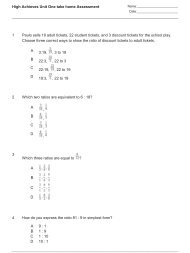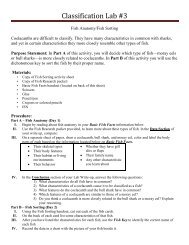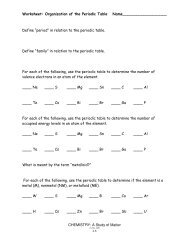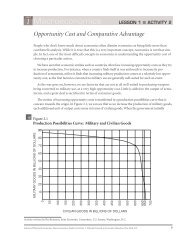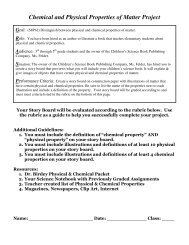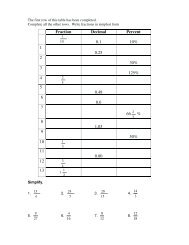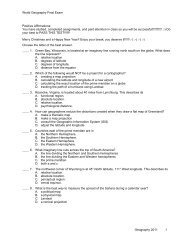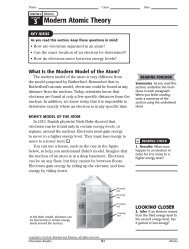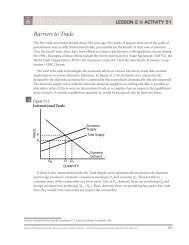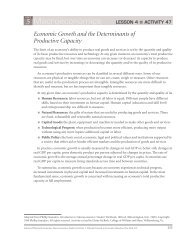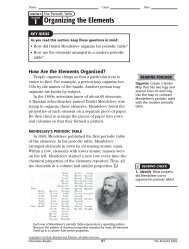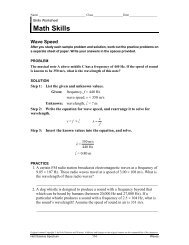Notes on Biogeochemical Cycles and Ecology.pdf
Notes on Biogeochemical Cycles and Ecology.pdf
Notes on Biogeochemical Cycles and Ecology.pdf
Create successful ePaper yourself
Turn your PDF publications into a flip-book with our unique Google optimized e-Paper software.
ground. Gravity c<strong>on</strong>tinues to operate, either pulling thewater underground(groundwater) or across the surface (runoff). In either event, gravityc<strong>on</strong>tinues to pull water lower <strong>and</strong> lower until it reaches the oceans (in most cases; theGreat Salt Lake, Dead Sea, Caspian Sea, <strong>and</strong> other such depressi<strong>on</strong>s may also serve asthe lowest basin into which water can be drawn). Frozen water may be trapped incooler regi<strong>on</strong>s of the Earth (the poles, glaciers <strong>on</strong> mountaintops, etc.) as snow or ice,<strong>and</strong> may remain as such for very l<strong>on</strong>g periods of time. Lakes, p<strong>on</strong>ds,<strong>and</strong> wetl<strong>and</strong>s form where water is temporarily trapped. The oceans are salty becauseany weathering of minerals that occurs as the water runs to the ocean will add to themineral c<strong>on</strong>tent of the water, but water cannot leave the oceans except by evaporati<strong>on</strong>,<strong>and</strong> evaporati<strong>on</strong> leaves the minerals behind. Thus, rainfall <strong>and</strong> snowfall are comprisedof relatively clean water, with the excepti<strong>on</strong> of pollutants (such as acids) picked up asthe waster falls through the atmosphere. Organisms play an important role in the watercycle. As you know, most organisms c<strong>on</strong>tain a significant amount of water (up to 90%of their body weight). This water is not held for any length of time <strong>and</strong> moves out ofthe organism rather quickly in most cases. Animals <strong>and</strong> plants lose water throughevaporati<strong>on</strong> from the body surfaces, <strong>and</strong> through evaporati<strong>on</strong> from the gas exchangestructures (such as lungs). In plants, water is drawn in at the roots <strong>and</strong> moves to thegas exchange organs, the leaves, where it evaporates quickly. This special case iscalled transpirati<strong>on</strong> because it is resp<strong>on</strong>sible for so much of the water that enters theatmosphere. In both plants <strong>and</strong> animals, the breakdown of carbohydrates (sugars) toproduce energy (respirati<strong>on</strong>) produces both carb<strong>on</strong> dioxide <strong>and</strong> water as wasteproducts. Photosynthesis reverses this reacti<strong>on</strong>, <strong>and</strong> water <strong>and</strong> carb<strong>on</strong> dioxide arecombined to form carbohydrates. Now you underst<strong>and</strong> the relevance of the termcarbohydrate; it refers to the combinati<strong>on</strong> of carb<strong>on</strong> <strong>and</strong> water in the sugars we callcarbohydrates.Carb<strong>on</strong> Cycle



